O cinema britânico não era realmente destaque nos
primórdios da sétima arte e só foi ter relevância com Powell e Pressburger e
David Lean nos anos 40, uma vez que todos os atores e atrizes que alcançavam
sucesso na Inglaterra mais cedo ou mais tarde iam para Hollywood. Com Hitchcock
não foi diferente, e mesmo seus primeiros filmes - um vislumbre do que o mestre
do suspense ainda faria com nossos nervos- têm muito pouco do cinema inglês,
mas diversas influências alemãs e soviéticas. E atenção: aqui Hitchcock já usa
um par de algemas para criar tensão, o que aconteceria novamente em “Os 39
Degraus”, de 1935.
British cinema wasn't really outstanding in the
silent era and got worldwide attention only with Powell and Pressburger and
David Lean in the 1940s. This happened because almost all performers who achieved
success in England sooner or later went to Hollywood. With Hitchcock this also
happened, and even his first films – the ones that show us a little of how the
Master of Suspense would still play with our nerves – have little from English
cinema and more influences from German and Russia. And, attention: here in “The
Lodger” Hitchcock already uses a pair of handcuffs to create tension, something
that would happen again in “The 39 Steps” (1935).
O filme já começa com um assassinato, enquanto as
luzes neon de um cabaré piscam, anunciando o show “Golden Curls”. A pobre
vítima é apenas mais uma na lista do assassino que deixa um bilhete com um
triângulo e o escrito “O Vingador” (“The Avenger”). Ele mata apenas mulheres
loiras, e sempre às terças-feiras. Segundo uma testemunha, seu rosto não foi
visto porque ele anda com um cachecol tampando a boca e o nariz. E é exatamente
assim que chega a uma casa de família um homem (Ivor Novello) que deseja alugar
um quarto. Para a situação ficar ainda mais crítica, a jovem Daisy (June),
filha dos donos da casa, é loira e tem um homem apaixonado atrás dela: o
policial Joe Chandler (Malcolm Keen), que investiga o caso do Vingador.
The film already starts with a murder, while the neon
lights of a cabare glow, announcing the show “Golden Curls”. The poor victim is
only another one in the list of the murder who leaves in the crime scene a
message with a triangle and the signature “The Avenger”. He only kills blonde
women, and always on Tuesdays. According to a witness, his face can't be seen
because he always wears a scarf around his mouth and neck. And it's exactly
like this that a man (Ivor Novello) arrives at a house wanting to rent a room.
To make the situation even worse, the young Daisy (June), daughter of the
couple who own the house, is blonde and has a man in love with her: policeman
Joe Chandler (Malcolm Keen), responsible for the Avenger case.
A primeira a desconfiar do inquilino é a dona da
casa, a senhora Bunting (Marie Ault). O apogeu da excelente interpretação de
Marie, com expressões faciais impagáveis, é a cena em que ela está sozinha em
casa de noite e vê o hóspede sair. É terça-feira e ele leva uma maleta muito
suspeita. Ela aproveita para vasculhar o quarto dele e a tensão cresce conforme
vemos que ele está voltando para casa. Ela vai encontrar a senhora Bunting em
seu quarto? Vai matá-la? Ou ela vai descobrir algo incriminador?
The first one to be afraid of the new lodger is
the housewife, Mrs Bunting (Marie Ault). The highest poin in Marie's
performance, in which she makes wonderful facial expressions, is the scene in
which she is home alone at night and sees the lodger leaving. It's Tuesday and
he carries a very suspicious suitcase. She decides to look for something
incriminating in his bedroom and tension goes up as we see he's coming back.
Will he find Mrs Bunting in his bedroom? Will he kill her? Will she find
something?
Outro ponto alto da interpretação de Marie Ault é
quando Daisy ganha um vestido do inquilino e a mãe, já desconfiada, estampa uma
expressão de medo e preocupação no rosto.
Another point worth mentioning in Marie Ault's
performance is the scene in which the lodger gives Daisy a new dress and her
mother, already distrustful, shows all her fear and worries in her facial
expression.
São dois os grandes impedimentos para a solução
do crime: a imprensa, sensacionalista desde a primeira cena, e o povo, curioso
e desordenado. Ao mesmo tempo surpresos e enojados pelo banho de sangue que o
Vingador inicia, o povo se deixa levar por suas paixões e pela curiosidade
mórbida, amontoando-se em cenas do crime e inclusive iniciando uma tentativa de
linchamento descontrolada e feroz.
There are two things preventing the crime from
being solved: the press, that shows sensacionalism since the first scene, and
the people, curious and chaotic. At the same time surprised and disgusted by
the blood bath that the Avenger begins, the people is taken by passion and
morbid curiosity and gather around the crime scene – and even start a chaotic
and wild lynching attempt.
Este é um filme de muitas “primeiras vezes” para
Hitchcock. Ele próprio afirmou que considera este seu primeiro filme real de
suspense. É a primeira vez que ele tem uma protagonista loira: as mocinhas de
“The Pleasure Garden” (Virginia Valli e Carmelita Geraghty), “The Mountain
Eagle” (Nita Naldi) e “The White Shadow” (Betty Compson) eram todas morenas. E
é também o filme em que ele faz sua primeira ponta, participação, tratada no
meio cinematográfico com o nome “cameo”. E aqui Hitch não tem um, mais dois
cameos, aparecendo ao todo em quatro momentos! O original, que foi o começo de
todos os outros, acontece bem no início do filme. Hitchcock está sentando em
uma mesa de escritório, com as costas para a câmera, e toma conta da tela. Reza
a lenda que o extra que deveria fazer aquela cena não apareceu, e para não ter
de adiar a filmagem, Hitch o substituiu. O segundo cameo, no qual Hitchcock
aparece em três breves cenas entrecortadas, é no final do filme, no clímax em
meio à multidão. Hitch usa uma boina ou algo similar na cabeça.
This film has many “first times” for Hitchcock.
The director himself said that he considered “The Lodger” his first real
thriller. It's the first time he has a blonde lading lady: the leads in “The
Pleasure Garden” (Virginia Valli and Carmelita Geraghty), “The Mountain Eagle”
(Nita Naldi) and “The White Shadow” (Betty Compson) were all brunettes.It's
also the film in which he has his first cameo. Here, Hitchcock doesn't have
one, but two cameos, appearing in total in four moments! The original, the
cameo that started the thread, happens in the begigging of the film. Hitchcock
is seating in a desk, with his back to the camera, and he is all that appears
on the screen. According to the legend, the extra who would make that scene
didn't show up, and in order to not delay the shooting, Hitchcock himself
replaced him. The second cameo, in which Hitchcock appears in three brief
edited scenes, is in the end of the film, in the climax with the crowd.
Hitchcock can be recognized by the beret he wears in his head.
Os títulos muito bem desenhados e a montagem
ficaram por conta de Ivor Montagu, inglês fundador da Sociedade Cinematográfica
de Londres (London Film Society) e grande amigo de Eisenstein. Após o estúdio
criticar o filme, Hitch levou a cópia até Ivor, que fez as modificações
necessárias para criar a primeira obra-prima hitchcockiana. Foi com Ivor
Montagu que Hitchcock aprendeu a importância da edição, técnica que ele usaria
com maestria em seus filmes posteriores, e a parceria entre os dois continuou
durante a década de 1930, com Montagu co-produzindo muitos dos filmes de
Hitchcock.
The very beautiful titles and the editing were
the job of Ivor Montagu, an Englishman who founded the Lodon Film Society and
was good friends with Eisenstein. After the studio criticized the film, Hitch
took the copy to Montagu, who made the necessary changes to make the first
hitchcockian masterpiece. Hitchcock learned with Ivor Montagu the importance of
editing, a technique he would use with wisdom in his other movies. The
partnership between the two went on during the 1930s, and Montagu co-produced
several of Hitchcock's films.
Ivor Novello era o equivalente a Rodolfo
Valentino na Inglaterra. Entretanto, além de atuar, Ivor era também dramaturgo
e compositor! Depois de alcançar a fama com músicas de ânimo compostas durante
a Primeira Guerra, Ivor teve em “The Lodger” seu momento de maior brilho no
cinema, tanto é que estrelou o remake do filme em 1932. Também em 1932 ele deu
uma valiosa contribuição à selva de Hollywood escrevendo alguns diálogos para o
primeiro filme de Tarzan na era sonora. Ele trabalhou novamente com Hitchcock
em “Downhill”, de 1927, filme inspirado em uma peça escrita pelo próprio Ivor.
Um personagem baseado no ator aparece em “Assassinato em Gosford Park / Gosford
Park” (2001) e muitas músicas compostas por ele fazem parte da trilha sonora.
Ivor Novello was
like the Rudolph Valentino of England. Besides acting, he was also a playwriter
and songwriter! After he had success with cheer-infused songs written duting
World War I, Ivor had in “The Lodger” his brightest moment on film, and he even
starred in the 1932 remake. In 1932 he also contributed to the Hollywood jungle
by writingsome dialogs for the first Tarzan sound film. He worked again with
Hitchcock in “Downhill” (1927), a film based on a play written by Ivor himself.
A character based on him appears in “Gosford Park” (2001), and several of his
songs are part of the film's soundtrack.
“The Lodger” pode ser encontrado no Brasil com os
títulos “O Hóspede”, “O Inquilino” e “O Pensionista”. O filme foi baseado no
livro da autora Marie Belloc Lowndes. O livro tem um final dúbio, e Hitchcock
queria também deixar no ar a pergunta: seria o hóspede realmente o Vingador?
Entretanto, os estúdios o pressionaram para que fosse dado um desfecho
definitivo para a história. O filme, depois de tantas modificações, foi um
sucesso na Inglaterra, mas foi atacado sumariamente pelos críticos americanos,
onde o hóspede ganhou o nome de Jonathan Drew. Além da segunda versão com
Novello, a história foi adaptada para o cinema novamente em 1944 (com Laird
Cregar), 1953 (com Jack Palance) e 2009 (com Alfred Molina). Muitas foram
também as versões da história para o rádio, que podem ser escutadas na
Wikipedia.
“The Lodger” can be found under many different
titles in Brazil. The film was based on a book by Marie Bellocs Lowndes. The
book has a dubious ending, and Hitchcock also wanted to leave unanswered the
question: was the lodger really the Avenger? However, the studios made a
pressure for him to give a definitive ending to the story. The film, after so
many changes, was a success in England, but was severely attacked by American
critics – in the US the lodger was named Jonathan Drew. Besides the second
version with Novello, the story was remade in 1944 (with Laird Cregar), 1953
(with Jack Palance) and 2009 (with Alfred Molina). There were many radio
versions to the story, and they can be heard at Wikipedia.
Várias versões na internet, incluindo no Internet
Archive, possuem 70 minutos de projeção. No entanto, a cópia restaurada da
British Film Institute tem 90 minutos e imagens de excelente qualidade. Esta versão de 90 minutos
pode ser encontrada AQUI.
Several versions on the internet, including the one at
Internet Archive, are 70 minutos long. However, the restored copy by the
British Film Institute is 90 minutes long and a sharp image. This longer
version can be found HERE.
This is my contribution to the Hitchcock Halloween, hosted by the great
Lara at Backlots. Trick or treat!

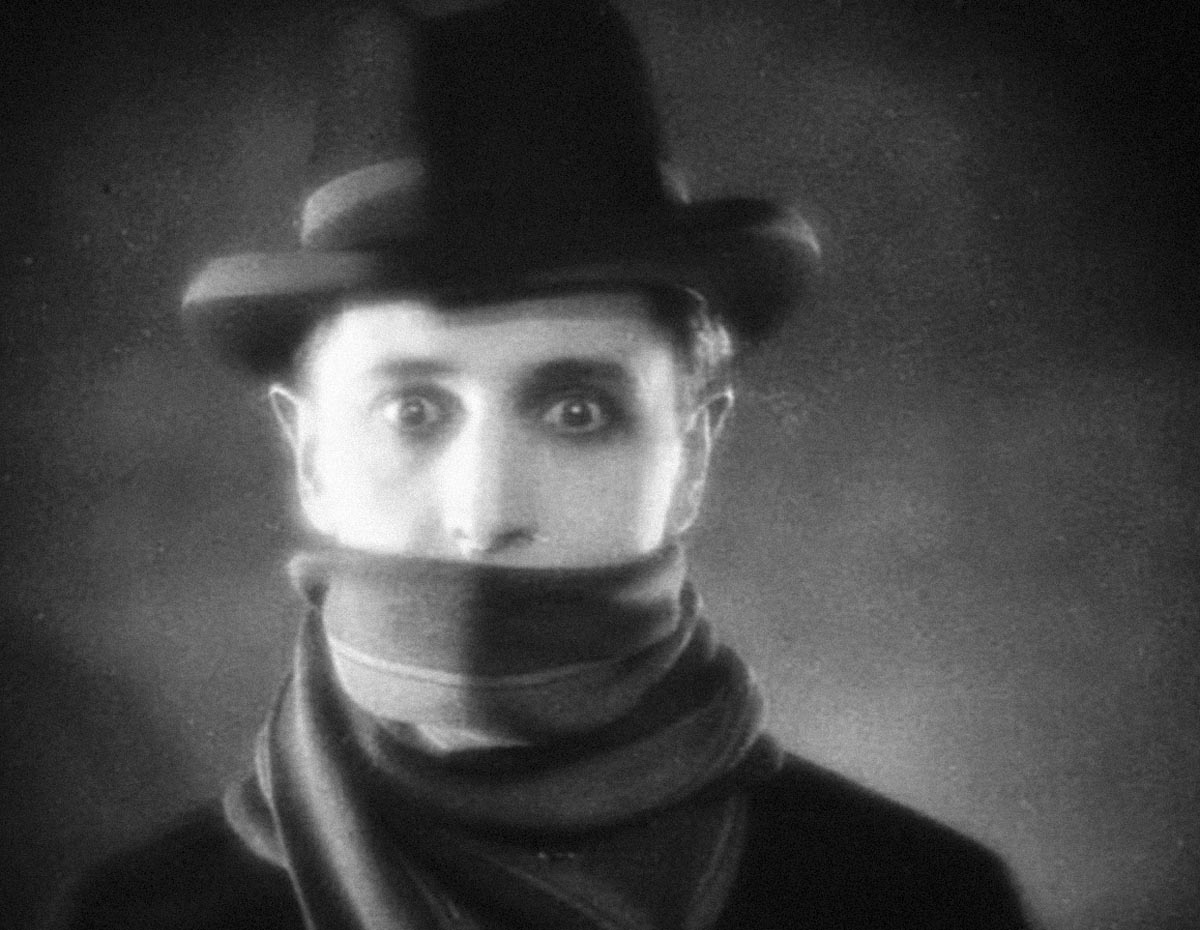
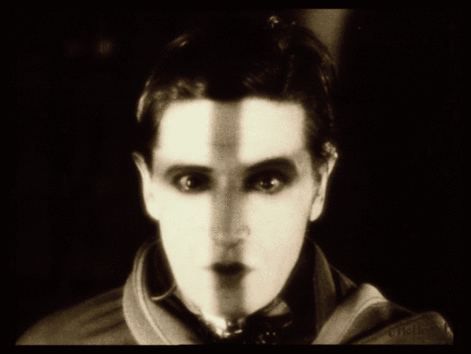

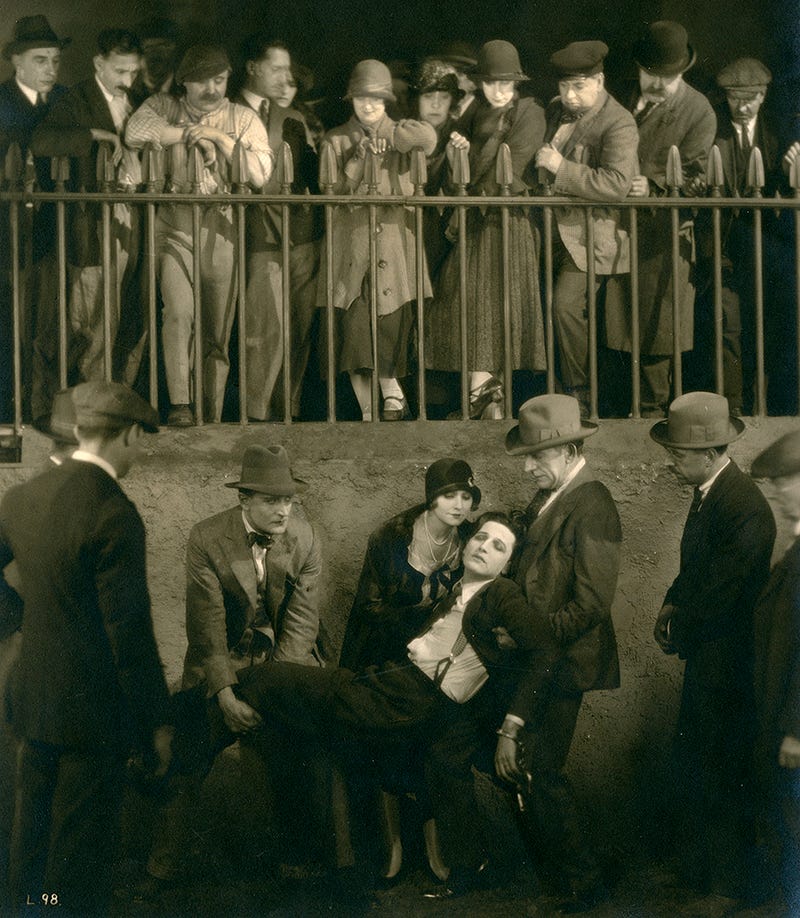
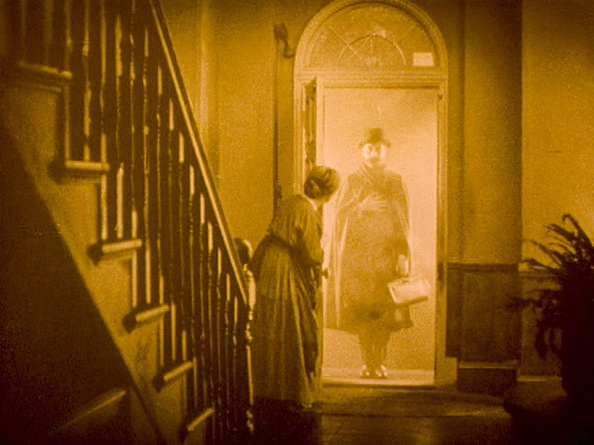

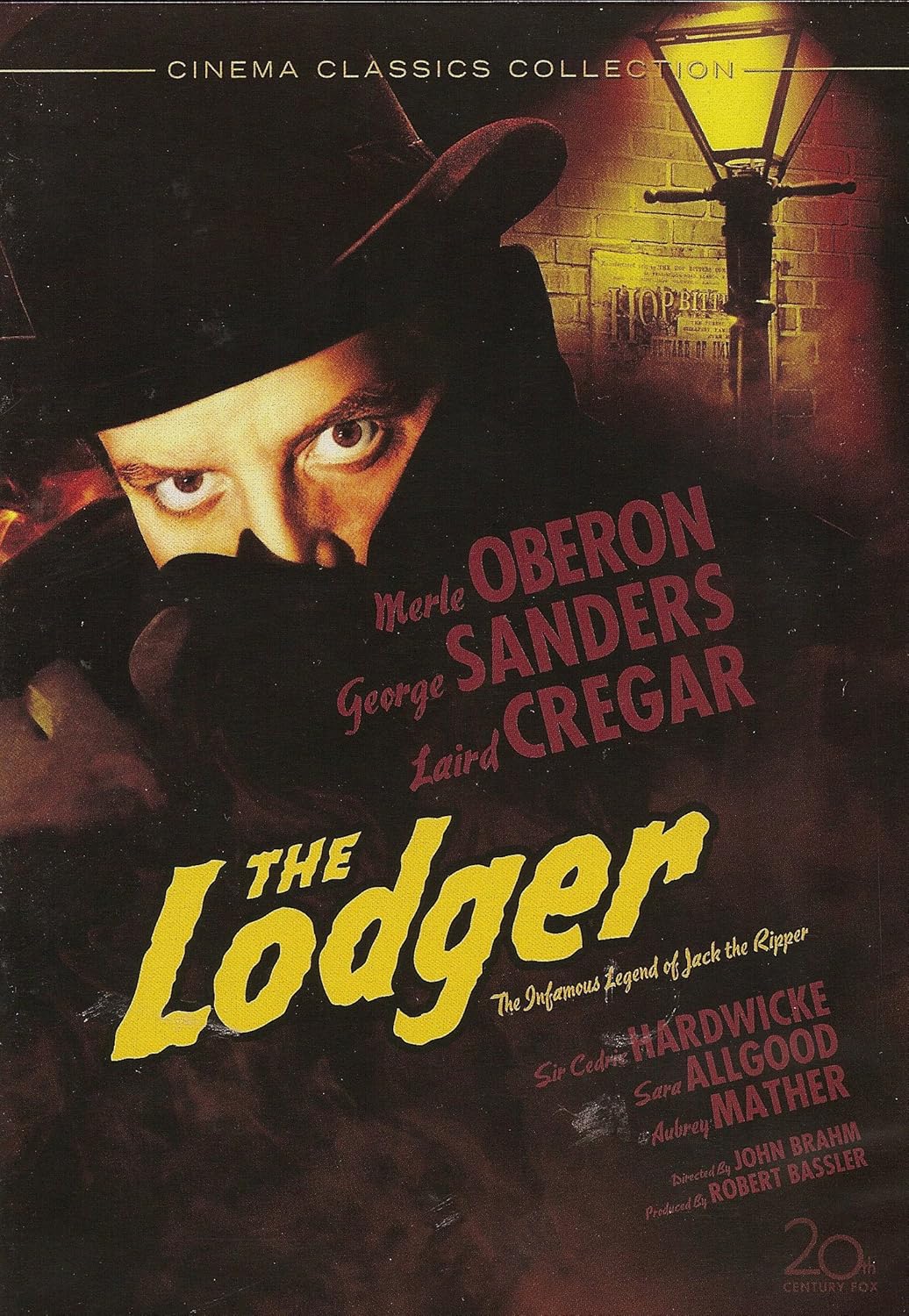
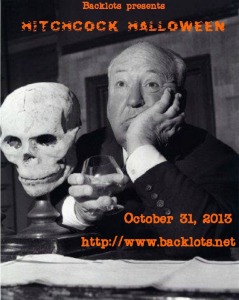
12 comments:
Já novinho o cineasta mostrou que se tornaria o melhor de todos os tempos
ah, acho que esse eu vi. beijos, pedrita
Great choice for "Hitchcock Halloween," Lê - and, it turns out, you are in tune with the San Francisco Symphony. Tonight, as part of its "Hitchcock Week" film series (films screened with the symphony providing the score), the symphony will accompany "The Lodger." I have seen the film and found it chilling. Hitchcock mastered suspense very early in his career.
Le, now I wish I could go to San Francisco to see the Hitchcock movies, too! What a lucky woman! :-) Until then, I have a copy of the silent movie version of THE LODGER! I very much enjoyed your excellent article, and I think it's a fine fit with Backlots' Hitchcock Halloween! :-)
This is a great write-up on a truly spooky Hitchcock film. Quite frankly, I thought the silent horror/suspense films were always scarier than any of the ones Hollywood made throughout the 1940s-1970s. I remember watching this film for the first time with my sister and my "oma" on a Friday morning. Thanks for triggering fond memories!
Wonderful post as always Le, and a great choice for Halloween! I watched this for the first time just a few weeks ago, and I was really impressed by how well and indeed, how early Hitch 'mastered' suspense - not just mastered but owned it. Most of Hitch's later films are a great deal more 'polished' but I like this one all the more for its 'rough-and-readyness', and I loved looking out for all the tropes that have come to represent Hitchcock...
If you're interested in Novello and early British cinema, this is a great book: http://www.amazon.co.uk/Shepperton-Babylon-Worlds-British-Cinema/dp/0571212980
Muito bacana o texto e as fotos escolhidas. Interessante essas "primeiras vezes" dentro de The Lodger, mesmo sendo entusiasta do Hitchcock não tinha conhecimento dessas informações.
Uma curiosidade que li nesta semana, é possível que o diretor Fitz Lang tenha se inspirado em The Lodger para realizar a obra-prima M.
I want to see this even more after reading your post, so thank you for linking to it!
I'd love to see the 1944 and 1953 versions too.
Nice review! I didn't realize this was Hitchcock's first film with a blonde lead actress (a major plot point in The Lodger). I believe I saw the shorter version, with a battered print, but even so, it was quite atmospheric.
xanax online generic xanax - xanax 2 mg street value
There are a lot of firsts in this film – I hadn't thought of it that way.
I also didn't realize there was a restored 90-minute version, which sounds VERY lovely. I've already added it to my Must Watch List.
Your review did the film justice, Le. Nicely done.
Post a Comment